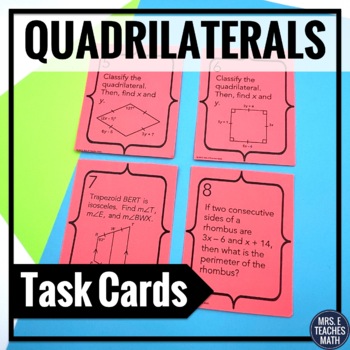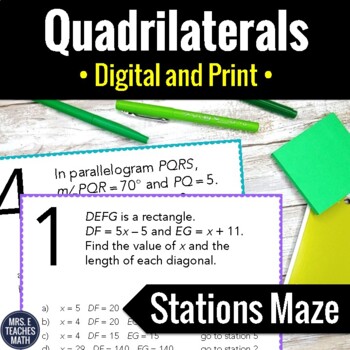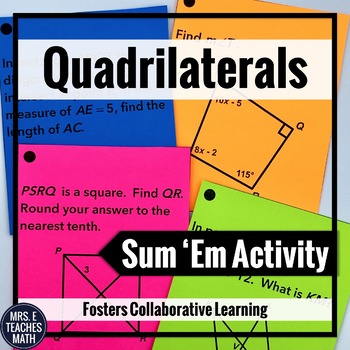When I first started teaching Geometry, the quadrilaterals unit was a little overwhelming. There were several shapes all with a bunch of properties, and I found myself forgetting some of them. #teacherfail It was not my favorite unit. My second year, I pieced together this little story and have shared it with my students ever since.
Disclaimer: I have seen a few cute stories floating around the internet. This is not one of them. My story could be considered slightly risqué. However, my kids think it is funny and remember it. Use common sense before deciding to share this with your class. :)
If you read my post about my student’s awesome quadrilaterals projects, some of my students mentioned family relationships. They were referring to this story as they made their projects.
At the risk of writing this in an annoying way, I’m going to try to share this exactly as I share this in class. It’s better if you ham it up a lot. I usually try to make it sound like a soap opera (I make my own sound effects). By this point in the year, my students are used to my craziness. I do not use a powerpoint or anything, I just draw it on the board. As I go, I also list the properties off to the side. I write them in shorthand as I’m telling the story.
The Story
“Put your pencils down for a few minutes. I’m going to tell you a story. You’ll have time to write any notes that you want in a few minutes.
We’ve been talking about quadrilaterals. What are the properties of quadrilaterals again?
So, in the quadrilateral family, there were three kids: parallelogram, trapezoid, and kite. What are the properties of parallelograms? What are the properties of trapezoids? What are the properties of kites?
Now, in your family, you have a lot of the same traits as your parents. My dad has green eyes and I do too. I know you’ve talked about genetics in Biology. Well, in the quadrilateral family all of the kids have the same traits as the parents. Notice, that parallelograms, trapezoids, and kites all have four sides. Their interior angles all sum to 360.
Parallelogram got married and had two kids: rhombus and rectangle. Since rhombus and rectangle are parallelogram’s kids, they have all the same traits. Their opposite sides are parallel, their opposite sides are congruent, etc. They also have the same properties of their grandfather, quadrilateral.
All right y’all, this is where things kind of get sketchy. So, rhombus and rectangle… Well, they had a kid, named square.”
**At this point, some kid is going to make a comment. I let them, as long as it’s relatively PG. Usually, they say something about incest.**
“Square’s mom and dad are from the same family. So, square doesn’t have any extra properties. He’s just a little bit special.
Trapezoid only had one child. He named his son, isosceles trapezoid, after him. Isosceles trapezoid has a few extra properties.
Kite didn’t have any children.
So, this is the quadrilateral family tree. Just like all families, they have some issues, however, they all get along and are happy together.”
If you don’t end up sharing this story with your class, I hope it at least inspires you to do something interesting to help your students remember the properties of quadrilaterals.










